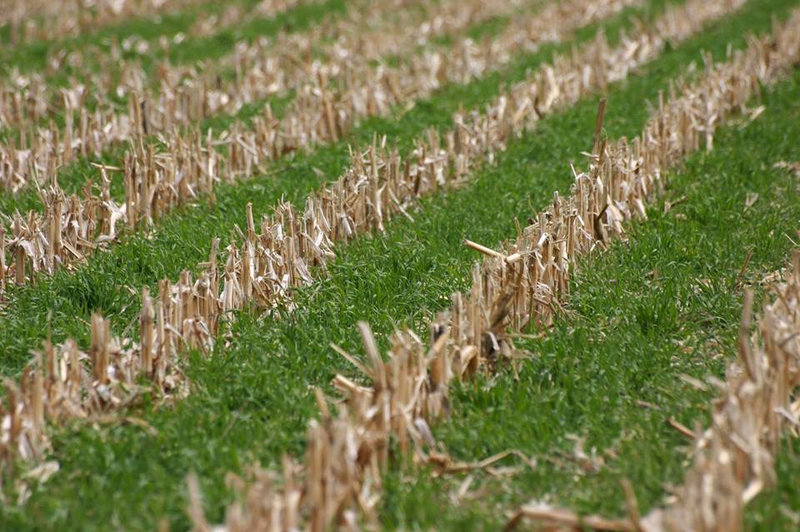Farm stress. There’s far too much of it going on these days. What a way to make a living as the farming economy has been in the dumper for over half a decade and it’s getting worse, just as we were beginning to see a tiny light at the end of a still very dark, very long tunnel. This COVID-19 outbreak and its effects on the economy are only making things more difficult.

The assignment from the National Association of Farm Broadcasting (I work there as Assistant News Service Editor) was to find an expert who could give farmers tips on how to handle the enormous stress they were carrying after the trade war with China, numerous weather disasters, as well as commodity prices so low that farmers could no longer cover their cost of production.
Thanks to a Google search, I found out that Dr. Josie Rudolphi of the University of Illinois was just the expert to help farmers deal with everything that’s happening. She’s an Assistant Professor in the Agricultural and Biological Engineering Department at the campus in Champaign, Illinois. Rudolphi has developed the HERD Stress Management Strategy and spends a lot of time speaking about it throughout rural America.
“Producers are experiencing more farm stress than we’ve seen over the previous five years, which no one thought was possible,” she said. “We’re getting further into spring, which is already a stressful period, and now we’re compounding that with COVID-19, which is a double-edged sword.
“Not only does it create health concerns,” Rudolphi added, “it also creates big concerns about what we see happening in the markets right now. Traditional markets aren’t available for a lot of their products right now, so people have to find a non-traditional way to move some of their products, or they have to dispose of them entirely. That’s an enormous stressor, so it’s a really challenging spring.”
HERD Stress Management
HERD is an acronym that describes what she calls “positive ways of coping with stress.” She tried to keep it as general as possible just because people experience and handle stress in different ways. The goal of the strategy is to keep people as healthy as possible through a stressful period.
HERD stands for Hobbies, Exercise, Relaxation, and Diversion. Rudolphi calls them “evidence-based ways of positively coping with stress,” with positively being the key word in the sentence.
Hobbies – “There’s a lot of scientific evidence that doing something purely for pleasure, even two hours a week, can have a tremendous impact on mental health,” she said. “What separates a hobby from a job is it’s a creative outlet. We’re talking about things like art, gardening, and woodworking.
“We do know woodworking is a big one on a lot of farms across America,” Dr. Rudolphi said. “So is working with metal, as well as restoring old farm equipment. Hobbies are something different from our jobs and something we want to do for ourselves. It’s a great way to shift yourself out of a stressful mindset, so find something to do that you truly enjoy.”
Exercise – “We all know exercise is good for us,” Rudolphi said. “Exercise has huge physical benefits, but it also has tremendous mental benefits as well. And you only need to do a minimum of 20 minutes a day, it doesn’t have to be arduous or intense. It just means getting your heart rate above resting. A brisk walk is certainly a way to start reaping some of the physical and mental benefits.
Relaxation – “It might be a no-brainer to some, but this is all about finding ways to decompress,” she said. “You know how life on the farm can be. It’s challenging and there’s always something to do and be worrying about.
“it could be something as simple as a nap,” Rudolphi said. “It’s often hard to find the time or even the justification for a quick nap. Getting the rest and relaxation that we need is a vital piece of maintaining our physical and mental health.”
Diversion – “It’s always fun to talk about diversions,” she said with a smile I could almost see over the phone. “It’s a way of distracting your brain and stopping something like negative self-talk or possibly a thought spiral.
“For example, if you find yourself getting really overwhelmed thinking about things like farm finances, farm succession planning, I always recommend you take 20 minutes and do something else. Change the task in front of you by maybe taking a drive to another farm for a visit. It could be a 20-minute YouTube video about something purely for entertainment or a laugh. It’s trying to divert our attention away from something bringing a tremendous amount of stress.”
Signs of serious farm stress
There are signs of extreme stress (what she calls “distress” that friends and family should be watching out for. You want to watch for physical, behavioral, and emotional changes in your friend or family member out on a farm.
“Watching out for signs is very important because we often have trouble admitting to ourselves that we’ve changed, especially if it’s not a positive change,” she said. “It’s easier to observe changes in others and bring it up to them if that should become necessary.”
Physical – “Are they sleeping a lot more,” Rudolphi said, “or have they gone the other way and don’t sleep much at all? Are they eating a lot more or a lot less? Are they experiencing some kind of chronic pain, such as a backache or headache? Is their heart racing or are they experiencing nausea?
Behavioral – “These are changes in our day-to-day patterns,” she said. “The changes could be in how much we eat, drink, or sleep. Changes could show up in what we’re interested in. They could also include work changes, especially if someone starts neglecting the things they’re supposed to do. Distressed people also could manifest changes how they care for themselves.”
Emotional – “These are the easiest changes to spot,” Rudolphi said. “Depression shows up as people not interested in the things they used to enjoy. They could also become easily agitated, irritable, or angry. A blowup at a family member is an obvious sign that there’s too much stress.”
Stress Management Resources
She says there are several national and regional stress lines that farmers can call to talk to someone about what’s happening on their farm. Iowa has the Iowa Concerned Hotline. Minnesota has several farm hotlines that producers can access. But, there’s nothing wrong with looking for professional help if you feel it’s gone that far.
“A really good place to start toward achieving that objective is to talk to your primary care provider,” she says. “They’ll be able to help you triage the situation and help you navigate the resources available in your insurance system.”
Farmers are known as independent folks who prefer to handle things themselves. Rudolphi says it’s vital to remember that asking for help does not make you weak or mean something is seriously wrong with you.
“No,” she said emphatically. “Absolutely not. If you have livestock and something is wrong with them, you wouldn’t hesitate to ask for help. Give yourself that same level of care, for both your sake and for the people around you.”










